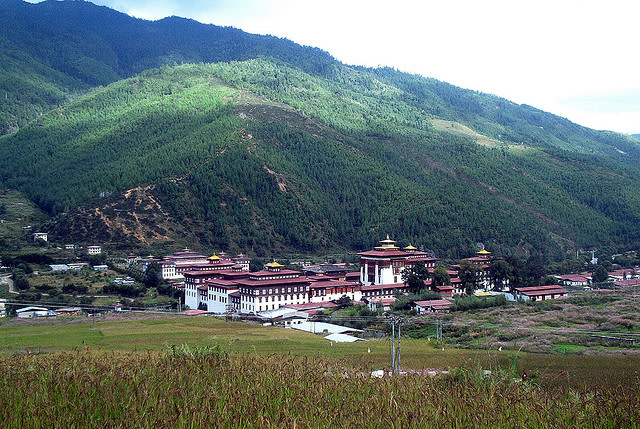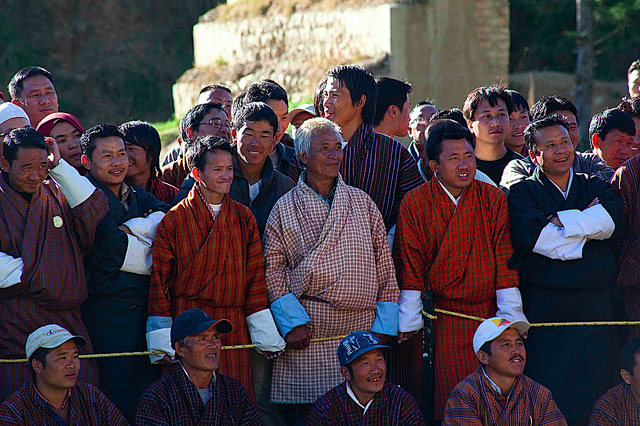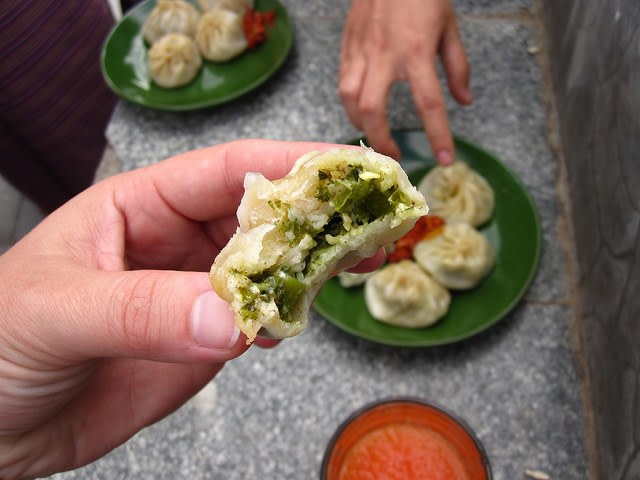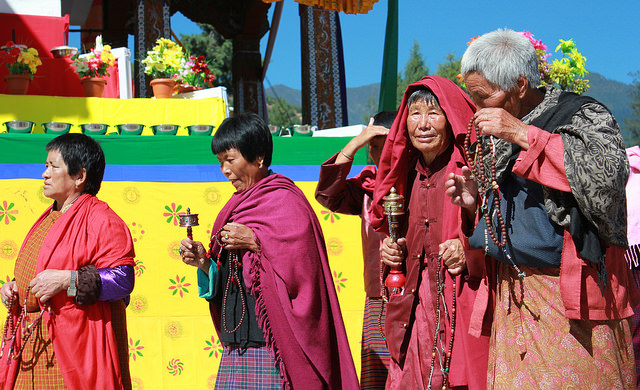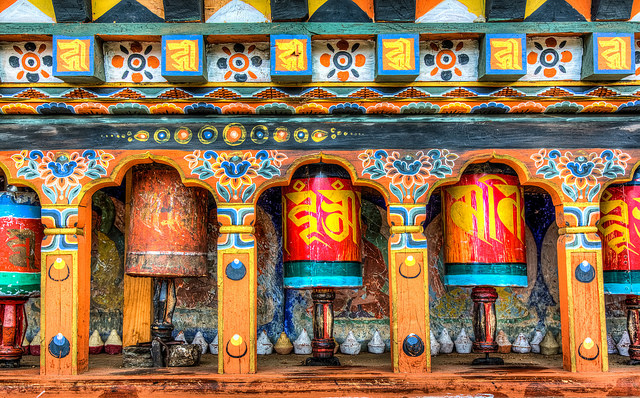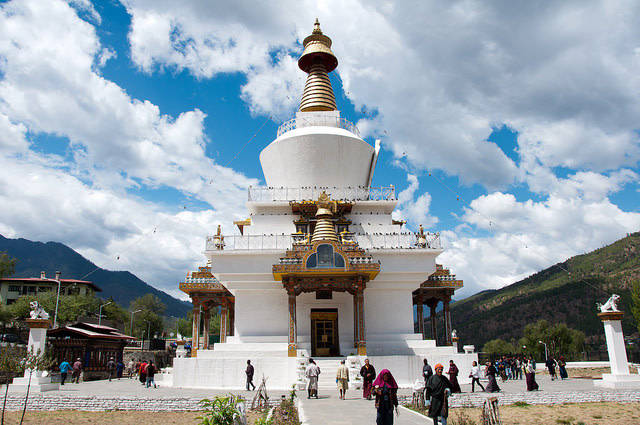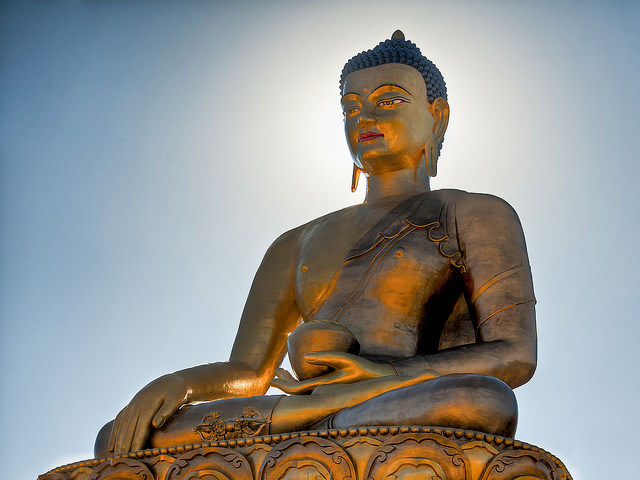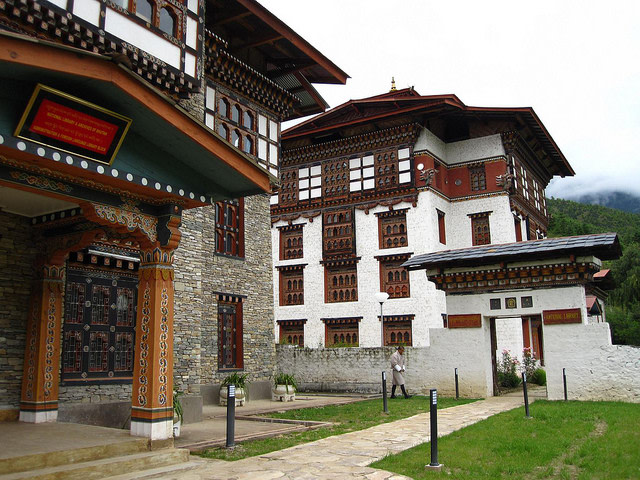| 5 mins read
Tucked into the western central region of Bhutan is the unassuming capital of Thimphu. Next to Asia’s capitals of Delhi, Bangkok, Phnom Penh… even Vientiane, Thimphu is in a world of its own. Relatively untainted by the influences of the modern world, Thimphu appears more like a sleepy mountain town than it does Bhutan’s economic, political and touristic epicenter. But it’s just this old world charm that makes Thimphu such an intriguing visit for foreigners. If you’re planning a trip to Bhutan, one of your first stops will undoubtedly be this lovely capital city.
A Capital City Saturated in Culture and Tradition
A city of less than 100,000 inhabitants, Thimphu is the modern face of Bhutan. ATM’s, restaurants, Internet cafés and shopping centers - it’s about as convenient and contemporary as the country gets. But if you’re worried about not having the authentic Bhutanese experience here… think again. Most locals still wear the traditional attire (the gho for men and kira for women), the streets are controlled by traffic police instead of stoplights and golden peaked stupas are the tallest structures in the city. Being small enough to cover on foot, Thimphu is an excellent place to first get acquainted with some traditional Bhutanese culture and customs.
Traditional Foods
Thimphu has a wide range of restaurants where visitors can try any of the following local dishes. Try the Ema Datshi, the national dish of the country, comprised of chilies and cheese and often mixed with vegetables and mushrooms. Phaksha Paa, a spicy pork dish usually accompanied by radishes or spinach, is another delicious option. Red rice, spicy minced chicken, tripe and certain Tibetan specialties (momos and thukpa) are also popular menu items that can be found all over the capital.
Cultural Observations
While Thimphu is slowly becoming more modernized, there is still a “national etiquette” followed by most. From certain dress in public areas and giving offerings to monks and elders (and allowing them the first servings of meals) to linguistic observations, customary food “refusals” and so on… customs and traditions are widespread in Thimphu. While foreigners aren’t expected to observe all these national rules, why not consult your Thimphu tour guide accompanying you (compulsorily) on your visit for a crash course on cultural immersion.
What to Do in Thimphu?
From monasteries and markets to parks and preserves, there are a number of notable sites that all visitors should explore during their time in Thimphu. Mahayana Buddhism is the state religion (observed by 75% of the country); hence many of the top things to do in Thimphu revolve around the practice.
Amongst the most important Buddhist sites in the city is Changangkha Lhakhang. A 12th century fortress-like temple, Changangkha Lhakhang sits in the hills above central Thimphu and attracts pilgrims from all over the country. The Memorial Chorten is another popular Buddhist attraction, built in 1974 to honor King Jigme Dorji Wangchuck. Constructed to represent the “mind of the Buddha”, this white washed chorten is adorned with golden bells and peaks and is one of the most famous icons of the city.
Tashichhoedzong is one of the most interesting visits in the city, as it acts as both a Buddhist monastery as well as the head of Bhutan’s civil government. Home to the king’s throne room, secretarial offices and ministry of home affairs, Tashichhoedzong is a perfect example of how interlinked religion, politics and every day life are in Bhutan. Other important religious attractions in the city are Zangthopelri Lhakhang, Dechen Phodrang Monastery and Kuensel Phodrang (home to the 51 meter-tall Shakyamuni Buddha Statue).
Touring the Non-Religious Side of Thimphu
While Buddhism does play a fundamental role in everyday life, there are plenty of non-religious attractions to visit in Thimphu. The Folk Heritage Museum is a great place to get acquainted with Bhutan’s rural past, with displays, exhibits and demonstrations walking visitors through centuries of everyday life in Bhutan. The National Textile Museum, National Library and Simtokha Dzong are some other excellent cultural visits, covering everything from language and ancient scriptures to royal garments and traditional attire. For those looking to explore the outdoors, Thimphu’s Botanical Gardens, Coronation Park and Takin Preserve (home to the national animal- the Takin) are some beautiful, relaxing and peaceful visits in the city as well.
When to Go?
The best time to visit Thimphu is during the spring (March-May) and autumn (September-November).


